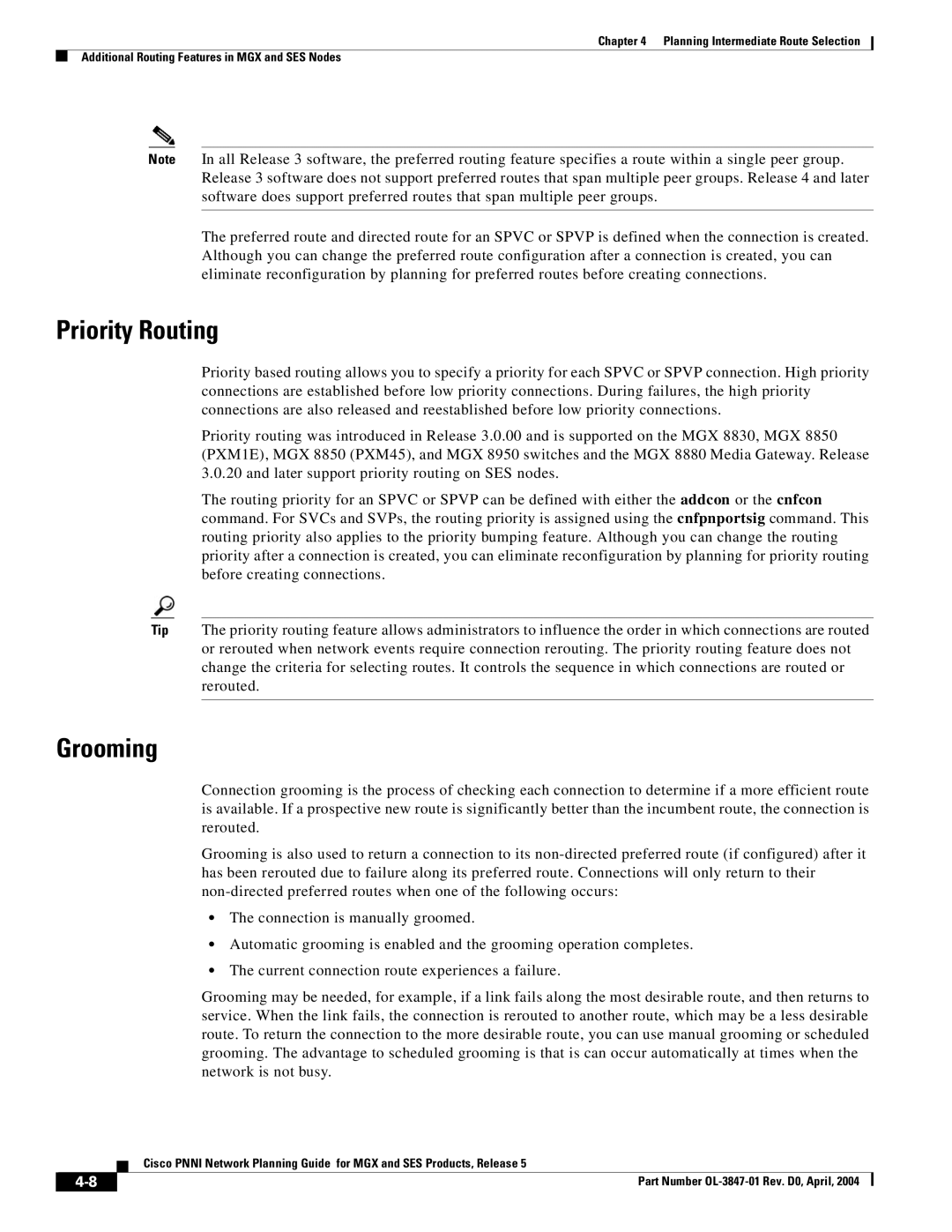
Chapter 4 Planning Intermediate Route Selection
Additional Routing Features in MGX and SES Nodes
Note In all Release 3 software, the preferred routing feature specifies a route within a single peer group. Release 3 software does not support preferred routes that span multiple peer groups. Release 4 and later software does support preferred routes that span multiple peer groups.
The preferred route and directed route for an SPVC or SPVP is defined when the connection is created. Although you can change the preferred route configuration after a connection is created, you can eliminate reconfiguration by planning for preferred routes before creating connections.
Priority Routing
Priority based routing allows you to specify a priority for each SPVC or SPVP connection. High priority connections are established before low priority connections. During failures, the high priority connections are also released and reestablished before low priority connections.
Priority routing was introduced in Release 3.0.00 and is supported on the MGX 8830, MGX 8850 (PXM1E), MGX 8850 (PXM45), and MGX 8950 switches and the MGX 8880 Media Gateway. Release 3.0.20 and later support priority routing on SES nodes.
The routing priority for an SPVC or SPVP can be defined with either the addcon or the cnfcon command. For SVCs and SVPs, the routing priority is assigned using the cnfpnportsig command. This routing priority also applies to the priority bumping feature. Although you can change the routing priority after a connection is created, you can eliminate reconfiguration by planning for priority routing before creating connections.
Tip The priority routing feature allows administrators to influence the order in which connections are routed or rerouted when network events require connection rerouting. The priority routing feature does not change the criteria for selecting routes. It controls the sequence in which connections are routed or rerouted.
Grooming
Connection grooming is the process of checking each connection to determine if a more efficient route is available. If a prospective new route is significantly better than the incumbent route, the connection is rerouted.
Grooming is also used to return a connection to its
•The connection is manually groomed.
•Automatic grooming is enabled and the grooming operation completes.
•The current connection route experiences a failure.
Grooming may be needed, for example, if a link fails along the most desirable route, and then returns to service. When the link fails, the connection is rerouted to another route, which may be a less desirable route. To return the connection to the more desirable route, you can use manual grooming or scheduled grooming. The advantage to scheduled grooming is that is can occur automatically at times when the network is not busy.
| Cisco PNNI Network Planning Guide for MGX and SES Products, Release 5 |
Part Number |
